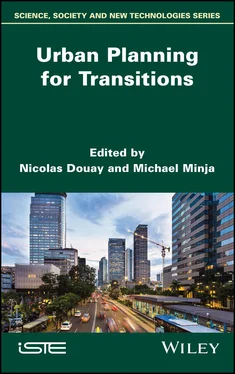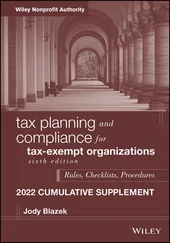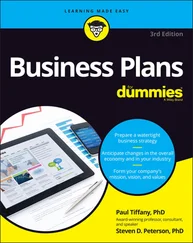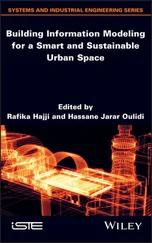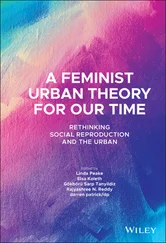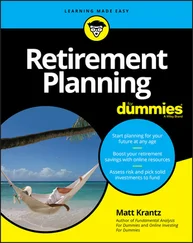158 155
159 156
160 157
161 158
162 159
163 160
164 161
165 162
166 163
167 164
168 165
169 166
170 167
171 168
172 169
173 171
174 172
175 173
176 174
177 175
178 176
179 177
180 178
181 179
182 180
183 181
184 182
185 183
186 184
187 185
188 186
189 187
190 188
191 189
192 190
193 191
194 192
195 193
196 195
197 197
198 198
199 199
200 200
201 201
202 202
203 203
204 204
205 205
206 206
Urban Planning for Transitions
Edited by
Nicolas Douay
Michael Minja

First published 2021 in Great Britain and the United States by ISTE Ltd and John Wiley & Sons, Inc.
Apart from any fair dealing for the purposes of research or private study, or criticism or review, as permitted under the Copyright, Designs and Patents Act 1988, this publication may only be reproduced, stored or transmitted, in any form or by any means, with the prior permission in writing of the publishers, or in the case of reprographic reproduction in accordance with the terms and licenses issued by the CLA. Enquiries concerning reproduction outside these terms should be sent to the publishers at the undermentioned address:
ISTE Ltd
27-37 St George’s Road
London SW19 4EU
UK
www.iste.co.uk
John Wiley & Sons, Inc.
111 River Street
Hoboken, NJ 07030
USA
www.wiley.com
© ISTE Ltd 2021
The rights of Nicolas Douay and Michael Minja to be identified as the authors of this work have been asserted by them in accordance with the Copyright, Designs and Patents Act 1988.
Library of Congress Control Number: 2020950533
British Library Cataloguing-in-Publication Data
A CIP record for this book is available from the British Library
ISBN 978-1-78630-675-3
David Eversley, the author of “ The Planner in Society: The Changing Role of a Profession ”, described how urban planners might be at a crossroads and they had a choice of paths to take. Eversley writes:
Straight ahead, perhaps, he (sic) can plod on with what he has been doing, and probably doing conscientiously enough: administering the law of the land. To one side: an abyss, a total disgrace, an abdication from social responsibility, the planner at the bottom of the heap and the scapegoat for all the evils of society. But in other directions, the road points to the possibility that the planner may be on the brink of greatness: a long, hard climb, not to a height where his judgment is unassailable and not so far removed from the realities of the urban scene that he need no longer communicate (Eversley 1973, p. 304).
Although the study he conducted focused on British town and city planning back then, it certainly addressed urban planners all over the world and through time. Indeed, Eversley presented this crossroads in a specific moment of debate in the urban planning history.
After dominating the practice and the theory for several decades, the traditional model of spatial planning, based on rationality, was gradually called into question from the end of the 1960s onwards. We then observed important changes in urban planning practices. It was less about a succession of paradigmatic ruptures than a gradual and concomitant evolution (Allmendinger 2002; Douay 2013).
In a context of neo-liberalism from the 1980s onwards, the contribution of the strategic current is above all the search for greater efficiency (Salet and Faludi 2000). Urban project became the catalyst, in order to bring together public and also private actors in their pluralities with the objective of coordinating the different forms of resources and legitimacies to ensure planning implementation and effective policies.
In addition, from the 1990s, the communication or collaborative current began to emerge. Judith Innes puts forward the idea that planning is first defined by communication (Innes 1998). In the same perspective, Patsy Healey put forward the idea that the primary mission of the planning actors is the communication with other participants in public policy processes:
(1) all forms of knowledge are socially constructed; (2) knowledge and reasoning may take many different forms, including storytelling and subjective statements; (3) individuals develop their views through social interaction; (4) people have diverse interests and expectations and these are social and symbolic as well as material; (5) public policy needs to draw upon and make widely available a broad range of knowledge and reasoning drawn from different sources (Healey 1997, p. 29).
Today, as the world undergoes rapid and dynamic transformations, riddled with uncertainties of the future, the role of urban planners has never been more important. So, we can make the hypothesis that urban planning and urban planners are in one of these new moments of crossroads. Climate change, urban migration, financial and economic crises have elevated urbanization to newer heights of complexity. They have also turned and revealed that urbanization is a multi-scalar process that needs to be tackled by integrating a multitude of scenarios, strategies and discourses in order to create an urban ecosystem that is resilient and efficient.
Emphasis should be placed in attaining a “system of cities” rather than focusing on an individual city or individual parameters in the city. In doing so, this will undermine the traditional perception that looked at cities as separate entities from nature and the countryside. Instead, cities will be perceived as reciprocal parts of regional ecosystems and dynamic landscapes obtained out of social and ecological processes from ecosystems all around the world.
As mentioned, contemporary urbanization is riddled with uncertainty, especially with what is currently going on with regard to climate change, migration and economic crises. That is, planners have a very significant role in the process of either creating sustainable and pristine urban spaces or contributing to the creation of urban spaces that are vulnerable and prone to social, political, economic or ecological complexities.
There is uncertainty and doubtfulness on how these constraints will be addressed with planning theories, policies or strategies. H. Ernston et al . (2010) explained that these uncertainties need to be faced with experimentation, learning and innovation. Urban innovation will eventually allow for more exploration and implementation of various innovation strategies to extreme levels.
Following this brief introduction, the next chapters of the paper will present and concisely discuss various urban transition strategies, action plans and programs that have been proposed or even been conducted in different countries all over the world, as each of them tries to address the urban complexities and also cope with the rapid pace at which the world is evolving. Urban planners have come up with transition proposals and concepts that they hope will be able to respond to the cities’ challenges and ultimately allow the cities to adapt and transition to more robust urban areas.
The transition strategies presented herewith have been presented, written and discussed as part of an introductory course on urban planning in the master’s program International Cooperation in Urban Planning at the Université Grenoble Alpes (IUGA). The main objective was to build on the diversity of students’ personal experiences and knowledge of international planning practices. The different chapters, therefore, are sorted into the following groups:
Читать дальше
